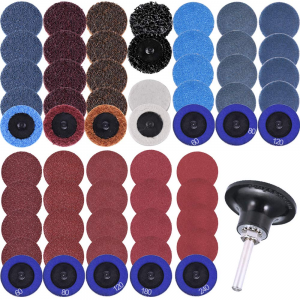I use a 90 degree 5/8" multi flute counter sink in a hand held handle for most all deburring on sheet metal up to CRS. The Greenlee punch will give you a perfect hole, but the edges are going to be a sharp 90 degrees. The edges will be razzor sharp unless you do something to break them. Been using the Greenlee punches for about 50 years on radio chassis, electrical boxes and now some of the plastic sheets. I got the one hole counter sink shown above, but haven't got around to trying it.
-
Welcome back Guest! Did you know you can mentor other members here at H-M? If not, please check out our Relaunch of Hobby Machinist Mentoring Program!
You are using an out of date browser. It may not display this or other websites correctly.
You should upgrade or use an alternative browser.
You should upgrade or use an alternative browser.
How to Deburr Holes in Thin Metal Parts
- Thread starter HarryJ
- Start date
- Joined
- Dec 3, 2017
- Messages
- 1,909
Oh yes I forgot about that. I deburr holes in electrical panels with a 1" countersink in a handheld drill as well. I also like the carbide hole cutters for making the holes. I've only been doing it for 7 years, but I don't imagine more years will change my mind.
- Joined
- Feb 7, 2011
- Messages
- 5,039
I use one of these with 240 grit disk in an angle grinder to deburr holes in thin metal

SIQUK 60 Pcs Sanding Discs Set 2 inches Quick Change Disc with 1/4 inch Tray Holder for Surface Prep Strip Grind Polish Finish Burr Rust Paint Removal: Amazon.com: Tools & Home Improvement
SIQUK 60 Pcs Sanding Discs Set 2 inches Quick Change Disc with 1/4 inch Tray Holder for Surface Prep Strip Grind Polish Finish Burr Rust Paint Removal: Amazon.com: Tools & Home Improvement
www.amazon.com

- Joined
- Feb 13, 2017
- Messages
- 2,138
I have been using "Slug Busters" for years in electrical work. The thing to keep in mind is that "Slug Busters" are sized for conduit sizes, same as pipe sizes. To get a 1/2 inch diameter hole, it would be necessary to use a "chassis punch" that is getting a little hard to find these days. 1/2 conduit is sorely larger, to the tune of around 7/8 inch.Greenlee 7211BB-1/2 Slug-Buster Knockout Punch Unit, 7/8-Inch - Hand Tool Knockout Punches - Amazon.com
Greenlee 7211BB-1/2 Slug-Buster Knockout Punch Unit, 7/8-Inch - Hand Tool Knockout Punches - Amazon.comwww.amazon.com
This would work extremely well for a virtually burr free hole in 20 gauge.
ConcurredI recommend you use a good quality step drill to create the holes. They are perfect for thin metal. They leave zero burr on the entry side and no burr or distortion to the exit side unless you bend the metal by pushing too hard. Applying the step drill lightly to the exit side will cut a slight chamfer, if necessary.
A step drill (larger than 1/2") will easilly remove burrs from your 20ga stock.
.

